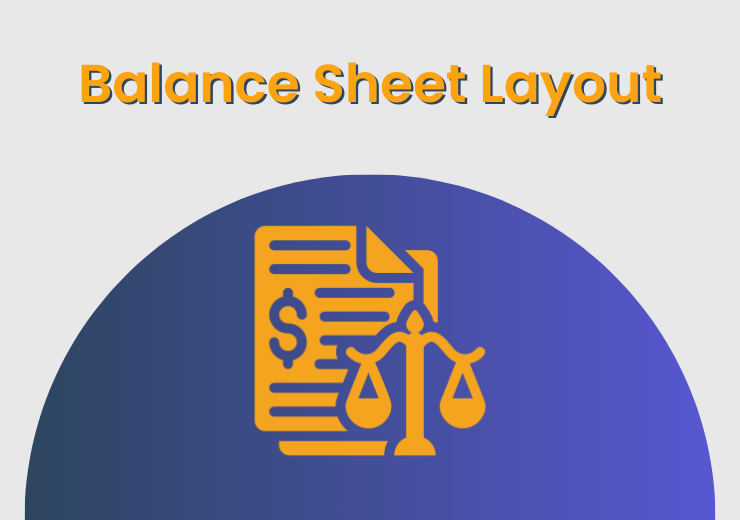Introduction
A balance sheet is one of the most fundamental financial statements for any business. It offers a snapshot of a company’s financial position at a specific point in time. Understanding how to read and prepare a balance sheet is crucial for business owners, investors, and financial professionals.
Understanding the Basics
Definition and Purpose
A balance sheet, also known as a statement of financial position, provides an overview of a company’s assets, liabilities, and equity. It is a key component of financial reporting and helps stakeholders make informed decisions.
Key Components
The balance sheet is divided into three main sections:
- Assets: What the company owns.
- Liabilities: What the company owes.
- Equity: The owner’s claims on the company’s assets.
Assets
Current Assets
Current assets are those that can be converted into cash within a year.
Cash and Cash Equivalents
This includes cash on hand and in the bank, as well as short-term investments that are easily convertible to cash.
Accounts Receivable
Money owed to the company by customers for goods or services delivered.
Inventory
Goods available for sale, raw materials, and work-in-progress items.
Non-Current Assets
Non-current assets are long-term investments that are not easily converted to cash.
Property, Plant, and Equipment
Tangible assets such as buildings, machinery, and land.
Intangible Assets
Non-physical assets like patents, trademarks, and goodwill.
Liabilities
Current Liabilities
Obligations the company must pay within a year.
Accounts Payable
Money the company owes to suppliers for goods and services received.
Short-Term Debt
Loans and other debts that are due within a year.
Non-Current Liabilities
Long-term financial obligations.
Long-Term Debt
Loans and financial obligations that are due beyond one year.
Deferred Tax Liabilities
Taxes that have been accrued but not yet paid.
Equity
Owner’s Equity
The owner’s claim after all liabilities have been settled.
Retained Earnings
Profits that have been reinvested in the business rather than paid out as dividends.
The Balance Sheet Layout
Vertical Layout
In a vertical balance sheet layout, the assets are listed at the top, followed by liabilities and equity at the bottom. This format is straightforward and commonly used in financial reports.
Horizontal Layout
In a horizontal balance sheet layout, assets are listed on one side, and liabilities and equity are listed on the other. This side-by-side comparison can be helpful for visualizing the relationship between assets and liabilities/equity.
How to Read a Balance Sheet
Analyzing Assets
Look at the liquidity and composition of the company’s assets to understand its ability to meet short-term obligations and invest in long-term growth.
Analyzing Liabilities
Examine the company’s debt levels and repayment terms to assess financial stability and risk.
Analyzing Equity
Review the equity section to understand the owner’s stake in the company and retained earnings.
Balance Sheet Ratios
Liquidity Ratios
Current Ratio
Current Assets / Current Liabilities. This ratio measures the company’s ability to cover short-term obligations with its current assets.
Quick Ratio
(Current Assets – Inventory) / Current Liabilities. This ratio provides a more stringent measure of liquidity by excluding inventory from assets.
Solvency Ratios
Debt to Equity Ratio
Total Liabilities / Owner’s Equity. This ratio indicates the proportion of debt and equity used to finance the company’s assets.
Common Mistakes to Avoid
Overlooking Non-Current Liabilities
Ensure that long-term debts are accurately recorded and considered in financial planning.
Ignoring Depreciation
Properly account for depreciation to reflect the true value of assets over time.
Balance Sheet in Financial Analysis
Role in Investment Decisions
Investors use balance sheets to evaluate the financial health and stability of a company before making investment decisions.
Importance for Creditors
Creditors assess balance sheets to determine the creditworthiness of a business and its ability to repay loans.
Examples of Balance Sheet Layouts
Sample Balance Sheet
Provide an example balance sheet to illustrate the layout and components.
Comparison of Vertical and Horizontal Layouts
Discuss the pros and cons of each layout and provide examples for better understanding.
Tips for Preparing a Balance Sheet
Accurate Data Collection
Gather precise financial data to ensure the balance sheet is accurate and reliable.
Regular Updates
Regularly update the balance sheet to reflect the current financial position of the company.
Advanced Balance Sheet Considerations
Consolidated Balance Sheets
For companies with subsidiaries, prepare consolidated balance sheets to present the financial position of the entire group.
International Standards
Follow international accounting standards (IFRS) for consistency and comparability with global businesses.
Conclusion
A well-prepared balance sheet is an essential tool for understanding a company’s financial health. By carefully analyzing assets, liabilities, and equity, stakeholders can make informed decisions and plan for future growth.
FAQs
What is the main purpose of a balance sheet?
The main purpose of a balance sheet is to provide a snapshot of a company’s financial position at a specific point in time, showing what the company owns and owes, as well as the amount invested by shareholders.
How often should a balance sheet be updated?
A balance sheet should be updated regularly, typically at the end of each accounting period, such as monthly, quarterly, or annually.
What is the difference between a balance sheet and an income statement?
A balance sheet shows the financial position of a company at a specific point in time, while an income statement shows the company’s financial performance over a period, including revenues, expenses, and profits.
Can a balance sheet be used to determine a company’s health?
Yes, a balance sheet is a crucial tool for assessing a company’s financial health by analyzing its assets, liabilities, and equity.
What are the limitations of a balance sheet?
A balance sheet does not provide information about the company’s future performance, and it may not reflect the current market value of assets and liabilities.

